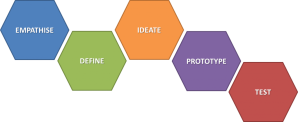Part 1 of the Define Mode
Why? Why? Why? Why? Why?
Why does the problem of a poor established math curriculum exist?
The current curriculum has been in place for five years, when it was first put together in a one-month span by the second grade team teachers, according to the Missouri learning Standards.
Why?
Teachers had an existing math series at the time that did not follow the standards or allow for flexibility within the lessons. Teachers wanted the option of being able to add to the established content, but didn’t feel as though they had the time, based on the schedule of the math book, nor did they feel students were getting enough practice of each concept.
Why?
The book did not spend enough time on a concept to where students were reaching mastery level prior to assessment or prior to the continuing of more new content.
Why?
Because there was much more content in the textbook as opposed to what the standards laid out that must be taught in second grade. The additional content was taking up time and did not allow for students to reach a deeper level of understanding of prior concepts. Due to the fact that the textbook was the only option, teachers wanted to disregard a textbook altogether.
Why?
Because of the ever-changing standards and the thought of Common Core being instated, buying a new textbook that would soon be outdated once the standards were in place didn’t seem like a feasible option at the time. Due to time constraints, researching other options was also not an option, thus the development of the worksheet binders for math.
POV Analogy
A school loving, math struggling, willing to work hard second grade group of students needs to be successful and achieve higher things with the help of a math curriculum that is more like the Google Play store (innovative with variety) rather than a video store (nearly obsolete).
POV Want Ad
Unengaged, unenthusiastic, average to below average achieving second grader seeks an exciting, innovative, math curriculum that includes challenging, thought-provoking tasks. These tasks may include, but are not limited to, project-based activities, multimedia presentations, hands-on manipulatives, learning opportunities that include “play”, etc. The opportunity to use varied forms of technology is a MUST!
Part Two of the Design Mode
Define Statement
The Problem and Audience: My Problem of Practice is the current state of the math curriculum in second grade. The problem directly affects the learning, understanding, and ultimately, the achievement of the second grade students in my school district. The second grade team teachers also serve as audience members because they have been using this teacher-created curriculum of worksheet binders for longer than they should and are leery about straying from the binders or incorporating any new supplementary items that are content related. I hope that the renovations that I come up with inspire them to make changes and adopt this new way of teaching for the benefit of our students. The administrators also play a role because they want to adopt a new curriculum, but keep in flexible to the teacher’s liking.
The Situation: There isn’t a textbook, and much of the curriculum as been developed by a hand full of my peers prior to my move to second grade this past year. Our current math curriculum consists of a one inch, three ring binder for each quarter. In those binders you will find a title page that has the concepts that need to be taught that quarter. After the title page are tabbed dividers with several worksheets, to teach these concepts. There is not an assessment piece to see how students are progressing, or digressing, exceling or struggling. I have expressed both interest and concern about this matter to my building principals and they have asked me to come to them with ideas, changes, etc. for next year on what could/should/needs to be done to increase the value and richness of the math curriculum. While it has great potential as far as personalized curriculum goes and there’s no tie to the idea of having a textbook that may be obsolete in a few years, I definitely feel like the curriculum itself needs revamping to allow for greater success with our students.
The Direction: First and foremost, a lot of what I would like to see are things that I’m already incorporating daily because I strayed away from what some of the others were doing after I discussed my vision and concerns with my building principal. I feel like technology should be used in the lesson and content presentation, manipulatives and other hands-on tools, videos, computer lab time, projects, and the option for games that tie in to each concept. Also, I would like to see individualized and personalized practice by utilizing classroom tablets for each student.
In the end, handing a student a worksheet after a short mini-lesson, the student working on it to turn the worksheet in, and never revisiting the concept for assessment worries me greatly, not only for my grade level, but also for the future of these students. It is very startling that a worksheet is the only dimension of mathematics that these students are seeing, when the resources and the effectiveness of these resources is outstanding. Their level of understanding goes no deeper than completing those problems and hoping for a good grade at the end of the day. Students are missing out on key concepts that deal with critical thinking, problem solving, and higher order thinking that is starting to have an effect on their overall achievement. I hope to alter and bring change to this startling idea. I hope to key in on one unit, make the changes, and present those changes to my second grade team and administrators as a pilot before undergoing the entire curriculum itself.
